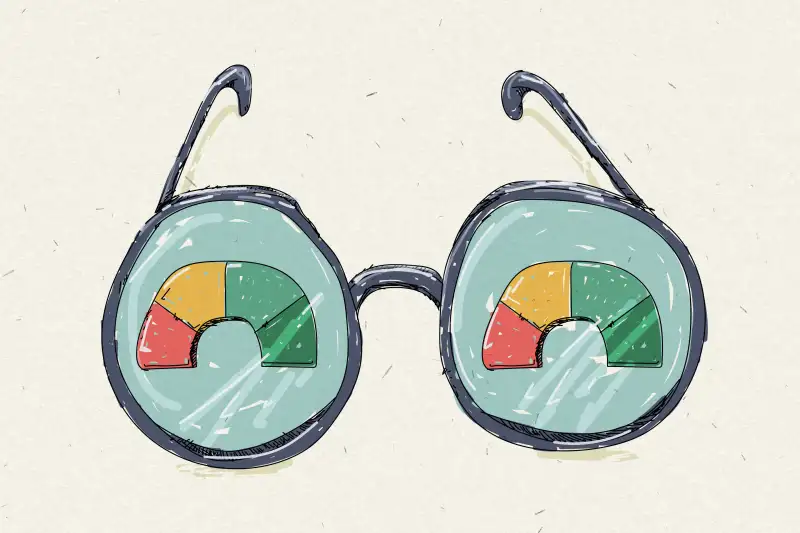How to Read Your Credit Report

If you’re like a lot of people, whenever you make a money misstep, your first thought is something along the lines of, “Oh no, what will this do to my credit report?”
Credit reports can seem daunting, especially when it comes to figuring out what exactly works in your favor — and what doesn’t. Common hiccups include late payments (even by a day!), credit history, and a whole host of other things that can impact your credit score.
If you plan on applying for a new credit card, a new apartment or any sort of loan, your credit report can carry a lot of weight when it comes to whether or not you get approved by lenders.
Below, we’ve broken down how to read your credit report so you’ll know if you’re moving in the right direction, and what to do if you’re not.
Step one: Get a free credit report
You can order a free copy of your credit report from any of the three credit bureaus — Equifax, Experian, and TransUnion — or you can get all three reports at once on the government website AnnualCreditReport.com.
Any of these options will give you a number from at least one (and oftentimes both) of the most widely-used credit scoring systems: FICO Score and VantageScore. Both use formulas that assign your credit a number between 300 and 850, with 850 being the highest.
You might see a slight variation in your score, since FICO Score and VantageScore use different proprietary formulas, but for most people that difference will only amount to a few points at most.
Step two: Take a look at your personal information
Your credit report will always list out some basic information to ensure the report you’re reading actually belongs to you, which is a useful tool when it comes to protecting yourself from identity theft. It will contain any variations of your name you’ve used in the past — including maiden names or nicknames — as well as previous addresses you’ve lived at.
You’ll also see your social security number — or at least the last four or the first three digits of it — as well as your birthday. The report will also include a list of employers you’ve listed on any applications for credit.
None of the information in this section of your credit report will impact your credit score.
Step three: Check the “credit history and accounts” section
This is the biggest, most daunting piece of your credit report, since it lists all of your existing lines of credit, as well as any credit cards you’ve opened and closed within the last 10 years.
Most importantly, this is where you’ll also be able to see your credit utilization ratio — which weighs your available credit limit against the amount of debt you currently owe. (Remember: No matter what your combined credit limit is, it’s best if you try to keep your usage under 30%).
You’ll also see data on your payment history — which includes debts you’re currently paying down as well as any debts you’ve paid off and closed within the last decade. For each mortgage, car or student loan, your report will show whether or not you are current on your payments, and will note any late or missed payments.
This section also lists any accounts for which you are an authorized user. It also includes home equity lines of credit and what you owe against them. All of these lines of credit will note the exact dates that the accounts were opened and closed, so the length of your payment history is crystal clear.
It will also make note of who closed each account — and note whether it was a creditor you didn’t make payments to on time, or if you closed the account yourself while maintaining a status of good standing.
All of these factors, good and bad, help determine the number that represents your credit score.
Step four: Scan for negative information
The “negative information” section, sometimes listed as “public records,” is a running tab of everything that can lower your credit score. These include red flags like bankruptcies, foreclosures and repossessions.
All of this data listed here has the potential to ding your score, but most bad marks go away after seven years. The exception is Chapter 7 bankruptcy, which will stay on your credit report for 10 years.
A list of all your credit inquiries will also appear on your credit report, since hard inquiries can act as a signal to lenders that you want or need more credit, which is another red flag.
Soft inquiries come from checking your own credit—which many banks allow you to do for free from their website or app—or when you authorize someone else to do so, like a potential landlord. These types of inquiries also appear on your credit report, but they don’t impact your score.
Step five: Dispute any errors
If you come across any inconsistencies in any of the steps listed above—even if it’s as seemingly small as an incorrect zip code on an old address—contact the credit bureaus and the company that authorized the line of credit (like your credit card or student loan lender) and ask how to fix the error.
Correcting more serious errors, like accounts that are wrongfully reported as past due or delinquent, will require filing an official dispute letter.
Since negative information can hurt your ability to qualify for a credit card, the loan amounts or credit limits you get approved for, you’ll want to get this sorted out as soon as possible. Here’s a guide on how to do exactly that.
More from Money:
This Is the Fastest Way to Raise Your Credit Score
Hard vs. Soft Credit Check: What's the Difference, and What Do They Mean for Your Credit Score?